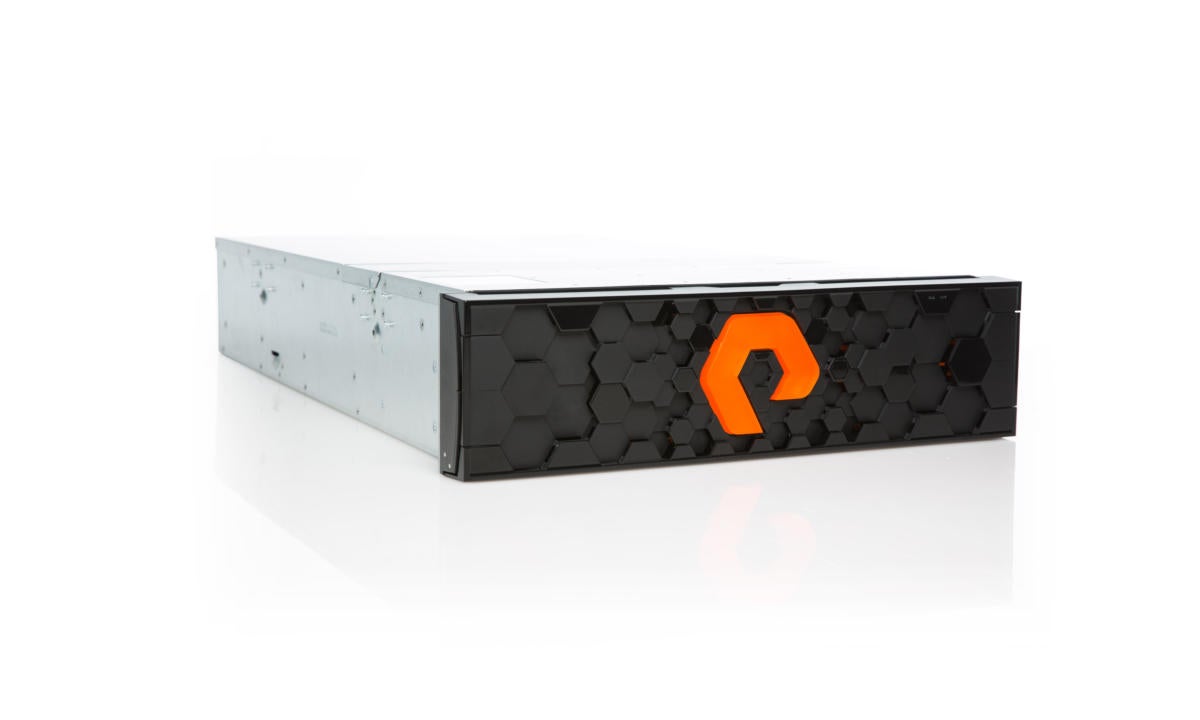- How to install MacOS 26 on your MacBook (and which models support it)
- Everything announced at Apple's WWDC 2025 keynote: Liquid Glass, MacOS Tahoe, and more
- AI活用による保険代理店の変革―人材育成と業務効率化の新戦略とは?
- The FPGA turns 40. Where does it go from here?
- You can dismiss Apple Watch notifications with a flick of your wrist now
Pure Storage expands its flash-storage systems and software lines

Pure Storage, the all-flash storage-array vendor, has expanded its Purity software base and is also expanding its line of storage products.
Pure has three storage lines, the FlashArray//X, the FlashBlade, and the FlashArray//C lines, all managed by its Purity software line. The updated Purity software adds Windows-application acceleration for the FlashBlade and FlashArray lines and delivers ransomware protection across file, block and native cloud-based apps, among other features.
The new version of Purity also adds granular monitoring so administrators get real-time visibility into the most active users on a network and see who is stressing the storage system.
FlashBlade looks to be getting the most attention, starting with new native server message block (SMB) support. This provides simplicity and multi-dimensional performance for very high throughput and IOPS with low latency to support multiple workloads simultaneously, files of any size, and sequential or random I/O access.
Customers can accelerate Windows applications with a rich set of existing data services, including Replication, File System Rollback, and SafeMode Snapshots for rapid ransomware recovery. Validated solutions include healthcare PACS applications and SQL Server Backup at speeds higher than 1TB/min for SQL farms that demand fast backup and recovery.
The FlashArray//C series is adding support for quad-level cell (QLC) NAND flash memory. QLC means four bits per cell, effectively increasing storage capacity by 33% over current triple-level cell (TLC) memory in the same physical space. The trade-off to this increase in capacity is that QLC has a shorter lifespan. How much shorter remains unclear because it’s so new.
So one of the key tasks of Pure’s software is to manage wear leveling, data placement, and upgrade cycles to increase lifespan.
New to all three systems is improved disaster recovery with ActiveCluster over Fibre Channel. ActiveCluster delivers stretch clustering for critical applications over any fabric and enables a third recovery site to be added anywhere in the world.
FlashBlade and FlashArray are now both protected by what Pure calls SafeMode snapshots, delivering a complete portfolio of protection tools to ensure data is always safe and recoverable in seconds, adding further protection against ransomware attacks.
The new features in Purity for FlashArray are available immediately and later in Q1 for Purity for FlashBlade.
Copyright © 2021 IDG Communications, Inc.

